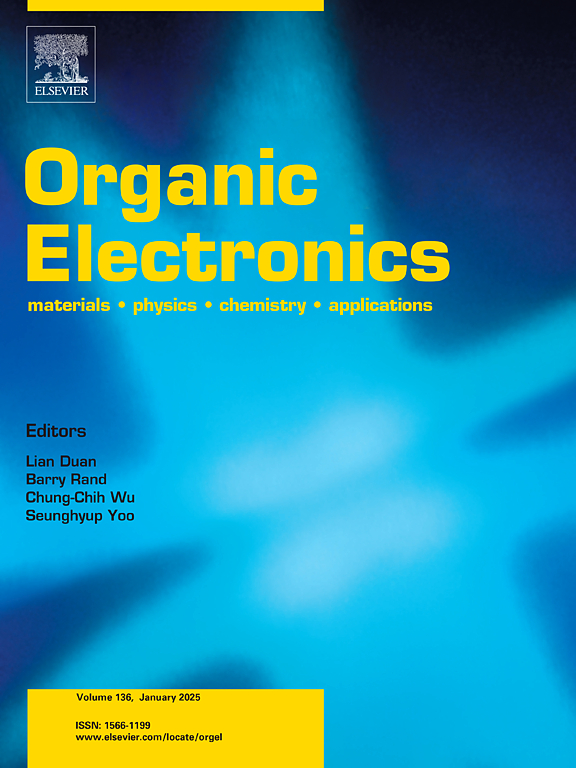用于高性能神经形态n型有机场效应晶体管的生物相容性牛血清白蛋白介电层
IF 2.6
4区 工程技术
Q3 MATERIALS SCIENCE, MULTIDISCIPLINARY
引用次数: 0
摘要
在这项研究中,我们系统地探索了牛血清白蛋白(BSA)作为生物相容性界面修饰层在基于N, N ' -二癸二烯-3,4,9,10-四羧基二亚胺(PTCDI-C13)的N型有机场效应晶体管(ofet)中的作用。通过改变BSA浓度从4.5到100 mg/ml,我们证明了它对介电厚度、表面能和界面陷阱密度的显著影响。最佳浓度为9.0 mg/ml时,表面平滑度和栅极介电耦合之间达到了良好的平衡,从而增强了分子有序度,降低了亚阈值摆动(0.09 V/dec),提高了载流子迁移率(0.7 cm2/V·s)。光致发光、拉曼和x射线衍射分析证实,BSA促进π -π堆叠和有利于有效电荷传输的晶体排列。此外,在含有4.5和9.0 mg/ml BSA层的设备中实现了突触功能,如明显的兴奋性突触后电流(EPSC)反应所证明的那样。这些发现突出了BSA作为高性能和神经形态有机电子应用的多功能介电材料的潜力。本文章由计算机程序翻译,如有差异,请以英文原文为准。

Biocompatible bovine serum albumin dielectric layers for high-performance and neuromorphic n-type organic field-effect transistors
In this study, we systematically explore the role of bovine serum albumin (BSA) as a biocompatible interfacial modification layer in n-type organic field-effect transistors (OFETs) based on N, N′-ditridecylperylene-3,4,9,10-tetracarboxylic diimide (PTCDI-C13). By varying BSA concentrations from 4.5 to 100 mg/ml, we demonstrate its significant influence on dielectric thickness, surface energy, and interface trap density. An optimal concentration of 9.0 mg/ml yields a favorable balance between surface smoothness and gate dielectric coupling, resulting in enhanced molecular ordering, reduced subthreshold swing (0.09 V/dec), and improved carrier mobility (0.7 cm2/V·s). Photoluminescence, Raman, and X-ray diffraction analyses confirm that BSA promotes π–π stacking and crystallographic alignment conducive to efficient charge transport. Furthermore, synaptic functionalities are realized in devices incorporating 4.5 and 9.0 mg/ml BSA layers, as evidenced by pronounced excitatory postsynaptic current (EPSC) responses. These findings highlight the potential of BSA as a multifunctional dielectric material for high-performance and neuromorphic organic electronic applications.
求助全文
通过发布文献求助,成功后即可免费获取论文全文。
去求助
来源期刊

Organic Electronics
工程技术-材料科学:综合
CiteScore
6.60
自引率
6.20%
发文量
238
审稿时长
44 days
期刊介绍:
Organic Electronics is a journal whose primary interdisciplinary focus is on materials and phenomena related to organic devices such as light emitting diodes, thin film transistors, photovoltaic cells, sensors, memories, etc.
Papers suitable for publication in this journal cover such topics as photoconductive and electronic properties of organic materials, thin film structures and characterization in the context of organic devices, charge and exciton transport, organic electronic and optoelectronic devices.
 求助内容:
求助内容: 应助结果提醒方式:
应助结果提醒方式:


